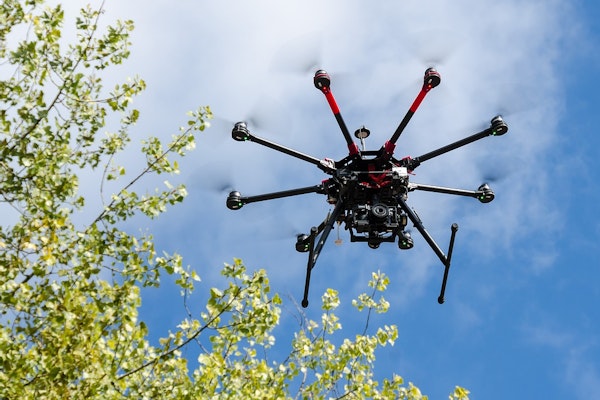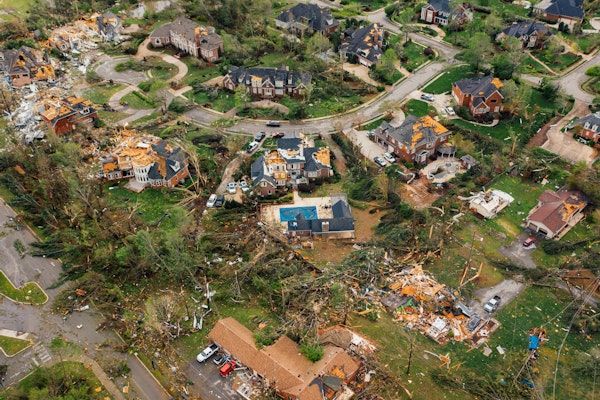
Massachusetts Insurance Brokers Accused of Stealing Over $700K from Clients
A Massachusetts couple has been charged with wire fraud for allegedly stealing over $700,000 in client premiums through their insurance firm and issuing fake coverage documents.
August 29
Fraud
Insurance Industry
Legislation & Regulation
Property
Massachusetts

Southern Europe Faces Unprecedented Wildfire Risk as Climate Change Fuels More Intense Fire Seasons
This summer’s wildfires in Greece, Turkey, and Cyprus were made 10 times more likely by climate change, exposing gaps in preparedness and highlighting rising regional risks.
August 29
Catastrophe
Legislation & Regulation
Property
Risk Management

How Insurtech Is Transforming the Homeowners Insurance Business Model
Homeowners insurance has long struggled with profitability, but new insurtech solutions like LeakBot and Ting aim to cut claims costs through proactive loss prevention.
August 28
Insurance Industry
Property
Risk Management
Technology

How Large Language Models Are Transforming Catastrophe Risk Modeling
Large language models are reshaping catastrophe modeling by integrating real-time unstructured data, enabling insurers to shift from reactive assessment to proactive mitigation.
August 26
Catastrophe
Property
Risk Management
Technology
California

Key Loss Adjusting Trends Shaping Property Claims in 2025
Sedgwick’s 2025 Loss Adjusting Insights Report explores the top nine trends—from tariffs and tech to legislation and climate change—reshaping property claims today.
August 25
Catastrophe
Legislation & Regulation
Property
Technology
California
Florida
Hawaii
Illinois
Iowa

Camaro ZL1 Becomes Top Target for Thieves as Muscle Car Thefts Surge
Chevrolet Camaro ZL1 tops latest HLDI rankings for whole-vehicle thefts, with theft rates nearly 40 times the average; Hyundai and Kia see results from anti-theft software.
August 20
Auto
Property
Risk Management
Technology
California
Maryland
Mississippi
Tennessee
Texas

Texas Sees Sharp Rise in Catalytic Converter Theft as Criminals Target High-Value Metals
Catalytic converter thefts are soaring across Texas, with Tarrant County hit especially hard. Learn why thieves target these parts and how to protect your vehicle.
August 20
Auto
Legislation & Regulation
Property
Risk Management
Texas

North Carolina Resident Charged with 54 Felonies in $1.8 Million Travel Insurance Fraud Case
A North Carolina resident allegedly forged medical and travel documents to defraud insurers of nearly $1 million and attempted to steal close to another $900K between 2020 and 2024.
August 18
Fraud
Insurance Industry
Litigation
Property
North Carolina

Hurricane Erin Threatens East Coast with Life-Threatening Surf and Evacuations Ordered in North Carolina
Hurricane Erin, now a powerful Category 4 storm, is forecast to bring dangerous surf and rip currents to the eastern U.S., prompting mandatory evacuations in coastal North Carolina.
August 18
Catastrophe
Insurance Industry
Property
Risk Management
Florida
North Carolina

Delivery Drones Are Expanding Rapidly as Safety, Cost, and Regulatory Challenges Persist
As FAA regulations evolve, drone delivery is scaling to more U.S. cities, though high costs, airspace safety, and privacy concerns continue to slow full adoption.
August 14
Legislation & Regulation
Property
Risk Management
Technology
Arizona
Florida
Georgia
Kansas
Missouri

Nonprofit Revives NOAA Billion-Dollar Disaster Data to Support Risk Modeling
Climate Central will take over the halted NOAA database of billion-dollar disasters, expanding its scope to support insurers, researchers, and public safety planning.
August 14
Catastrophe
Legislation & Regulation
Property
Risk Management

Why Outdated Payment Systems Are Holding P&C Insurers Back
Outdated and siloed payment systems are costing P&C insurers in efficiency, customer trust, and compliance—modernizing them is now a strategic necessity.
August 14
Insurance Industry
Property
Risk Management
Technology

Record-Breaking Insured Losses in 2025 Highlight Growing Impact of U.S. Wildfires and Storms
The first half of 2025 brought $84 billion in insured catastrophe losses, driven by U.S. wildfires and severe convective storms, making it the costliest H1 since 2011.
August 14
Catastrophe
Insurance Industry
Property
Risk Management
California
Florida
New Jersey
New York
North Carolina

Father and Son Found Guilty of Arson and Insurance Fraud in Michigan Restaurant Fire
A jury convicted the co-owners of Charlie’s Family Grill of arson and insurance fraud after fires destroyed their White Cloud restaurant and garage in early 2023.
August 14
Fraud
Insurance Industry
Litigation
Property
Michigan

Fake Slip and Fall on Banana Peel at Goodwill Leads to Insurance Fraud Charge
A staged fall in a Goodwill parking lot, falsely blamed on a banana peel and later a broken lighter, has led to an insurance fraud charge following a months-long investigation.
August 14
Fraud
Insurance Industry
Litigation
Property
Weird
Connecticut





